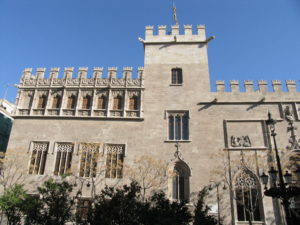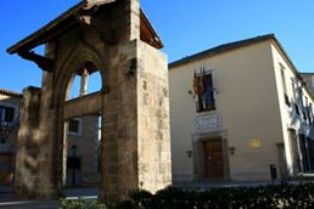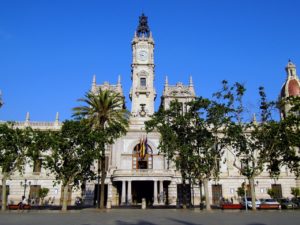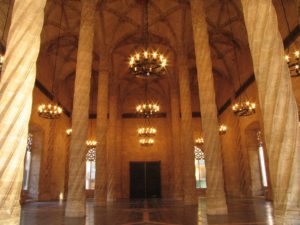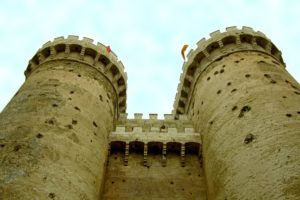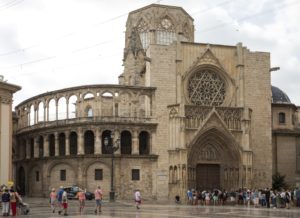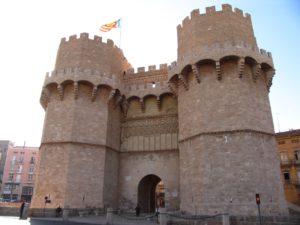Sant Agustí – Portal Nou
The heritage routes of Valencia bring us closer to the historical points around the old town of the city. Ciutat Vella is the oldest district in the city. We can find the main buildings and most emblematic monuments. It is the centre where the main administrative, financial, commercial, cultural and museum, religious and historical facilities of the city are located.
In Ciutat Vella we find one of the most emblematic neighborhoods of the city such as El Carmen. A neighborhood that over the years has been adapting to changes and today is one of the cultural, artistic and leisure meeting points of the city.
The routes we propose are around the Ciutat Vella district, enjoying the historic buildings, the charming old facades, cultural activity, the people and one of the oldest neighborhoods of the city of Valencia.
We start the route at the Central Market, modernist building of the twentieth century. Commercial epicenter of the city that houses a large market in the center of the city where you can find local and high quality products.
We will continue through La Llotja, formerly the Silk Exchange. A Valencian civil Gothic style building. Declared a World Heritage Site by UNESCO in 1996. It is located in the Market Square.
We continue through the Church of St. Augustine. Located in Mare de Déu de Gràcia street number 5. It is the church of an old friar convent. It dates from the fourteenth century.
Nearby we have the Museu Valencià de la Il·lustració i la Modernitat (MUVIM). It is a new building designed by the Seville architect Guillermo Vázquez Consuegra and is one of the best examples of contemporary architecture that can be visited in the city.
Church of San Carlos Borromeo dates from the eighteenth century. It belongs to the Catholic University of Valencia. It is located on Calle Quevedo number 2.
This section is comprised: The Colegio Mayor de la Seda. It dates from the fifteenth century and has been declared an Asset of Cultural Interest. It is located at number 7 Hospital Street. The baroque stone door on the main façade crowned with a relief of Saint Jerome, patron saint of the College of High Silk Art, should be highlighted. You can also admire the eighteenth century tile flooring that is an allegory to the universal admiration for Valencian silks around the world.
We continue with the Old Hospital dating from the XV-XVI centuries and which is now where the Public Library of Valencia is located. An emblematic building, a pleasure to enter its bibliographic archive in an environment like this.
We continue the route through the Hermitage of Santa Llúcia. It dates from the XVI-XVIII century and is located on Hospital Street. We continue with the Church of El Pilar (seventeenth century). And, finally, the City Hall of Valencia (XVIII-XX century) located in the central Plaza del Ayuntamiento.
In this location we find the School and church of the Pious Schools (eighteenth century).
At this point we find an eighteenth-century palace complex located at numbers 3, 5 and 7.
Here is the Sacred Church Heart of Jesus (nineteenth century).
At this point is the Palace of Juan de Valeriola (fourteenth century). Currently the Chirivella-Soriano Foundation.
We can follow the tour around the Torres de Quart (fourteenth century), old gateways to the city.
The Islamic wall at number 36 Cavallers Street. The palaces on Carrer Cavallers at numbers 43, 36, 33, 28, 26, 20-22 and 14-18. We continue on the same route with the Iber Museum (the tin soldier museum), we continue the tour through the Palace of the Generalitat until we reach the Cathedral of Valencia that is located between Plaza de la Virgen and Plaza de la Reina. Epicentre of the old town of Valencia.
We begin the tour on Calle Corona with the Centro Cultural la Beneficencia (nineteenth century), a building that today houses the Museum of Prehistory of Valencia, the Valencian Museum of Ethnology and other services of the Diputación de Valencia.
We continue the route through the Old Asylum of the Marqués de Campo (century XIX) and continue through the Mosen Sorell Market (century XX).
We continue the route to the Old Mesón of Morella (century XX), the Palace of the Martínez de Raga (century XIX) and the Portal de la Valldigna, a portal from 1400 that separated the Christian city from the Moorish city of Valencia.
Here we place the Church and Old Convent of Carmen (CCCC) (XIII-XVIII century) today converted into a Cultural Center where you can find exhibitions, interventions, festivals, music…
We continue the route through the Palace of Pineda (UM) (XVIII century).
On this route we will take a tour of the IVAM (Valencian Center of Modern Art). We will continue through the Central Market (twentieth century), the Lonja of the XV-XVI century, the Convent of San José and Santa Teresa (seventeenth century) and the Benlliure House Museum (located in the family home of the famous painter José Benlliure ). We continue the route to the Colegio Gran Asociación (Old Hall of Rationists, dating from the nineteenth century) and we will end with the Towers and the Serrano Bridge. The Torres de Serranos is one of the fortified gates of medieval Valencia.
